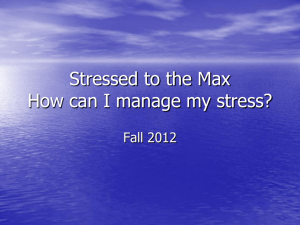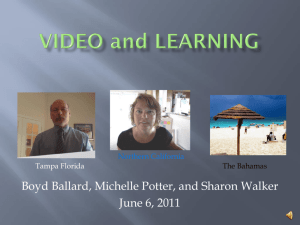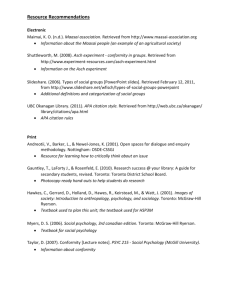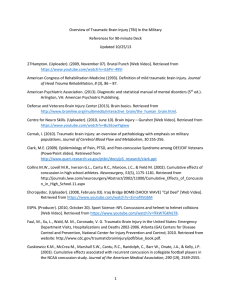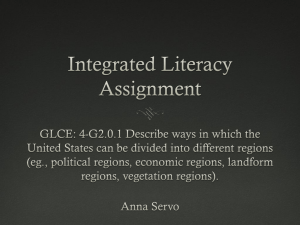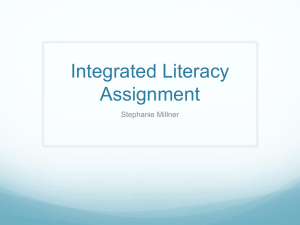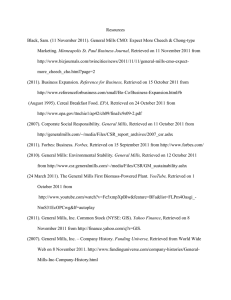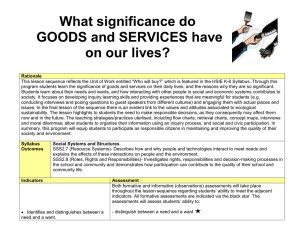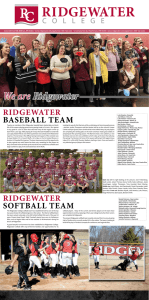Using technology in Note
advertisement
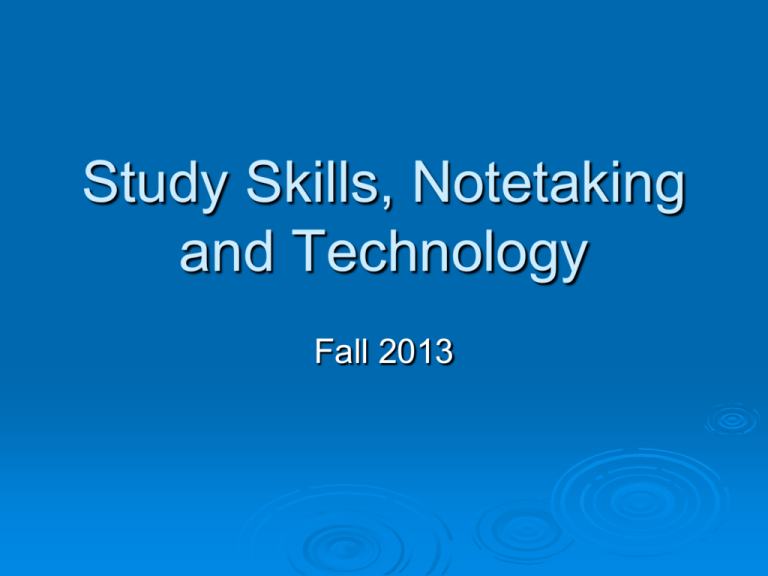
Study Skills, Notetaking and Technology Fall 2013 Overview of session Study techniques Learning from lecture Reading Memorizing What types of technology can I use To be successful, You need to be organized In order to be able to study, you need to be able to locate your notes, books, handouts, etc easily. Develop a system to get and stay organized! Be ready to study and take advantage of free time that may come up Plan to take time before and after class to review notes and readings Establishing a study routine Schedule time to study each day If you don’t have a planner or organizational system, get one! Make good use of your time before and after class-this is the best time to study Plan a time each week to review what you have studied in each subject area Try to study at the same time each dayestablish a routine How to make the most of your study time Have a good study environment Is it noisy? If you are distracted by the TV or conversations, you should find a different place to go Are you going to be interrupted? Make sure your family and friends know you are studying. Turn your phone off-no texting either… What is the lighting like? It should not be too bright or too dim Is it too hot or cold? Either extreme will cause problems. Find a temperature that will work for you Are you comfortable there? Is the chair okaydon’t get too comfortable or you may fall asleep. Are there distractions there-pictures to look at, laundry to do, etc? Does it have the equipment you need? Don’t give yourself an excuse to get up and walk away. Tips on getting started Can’t get motivated? Set a timer for 10 minutes and start studying. You probably won’t want to stop after you get started Study for the class that is most difficult for you first-don’t procrastinate! Research shows that studying in 60-90 minute blocks is best. Once you reach that time, take a break, then hit the books again. Know when you study best Take a look at how you use your time right now? Are you a morning person or evening person? When are you most alert? When are you best able to focus? By analyzing what you are doing now, you can make good choices about how to use your time in the future. Learning from lectures Taking notes is very important. In order to take good notes, you have to be a good listener. Be prepared. If you know what the lecture is going to be on, it will be easier for you to take notes. Read chapters, review hand outs etc. Sit in the front of the class. You will take better notes when you are able to pay attention and follow the lecture Learning from lectures (cont) Copy down everything on the board if possible. If not, try to focus on the following: What is the overview/beginning of the lecture What questions are asked of you during the lecture “What do you feel the most important.” Talks about terms and definitions Information that is repeated or emphasized When writing down notes, keep these things in mind… Develop short hand abbreviations-remove vowels (sty sklls) Use a half page system Lecture notes on the left Comments and revisions on the right Rewrite and condense notes after class. If possible spend 15 minutes before and after class reviewing your notes. Leave spaces as you write notes, so you can go back through and fill in the gaps Do notes taken in an outline form work for you? Read and review notes daily! Reviewing works much better than cramming Create flash cards from the lectures Talk with classmates and instructors about anything you missed Organizing your notes Three ring binders Notebooks Color coding Trapper Keepers Note taking apps For more tips, check out GPS LifePlan: GPS LifePlan: http://www.gpslifeplan.org/ridgewater/educatio n/index.php?link=studyskill-learning-online#2 Reading Reading is not running your eyes over the material-read actively Make sure you read everything-even the charts and graphs! Text books are all written differently Some are well organized and some are not Different types of books require different types of reading. Biology textbooks will take longer to read than some others Reading You will want to time yourself each semester to see how long it takes to read a page in each book in each class. This will allow you schedule enough time to read for each class Choose a moderate amount of reading material (50-90 minutes of sitting time) If the chapter has a summary, read it first-get an idea of what it is about Look up words you don’t understand Read the whole chapter Reading cont Try the SQ3R method (taken from www.studygs.net/texred2.htm) Survey the chapter Question Read Recite Review More on reading…. Periodically stop reading and try to connect the concepts to understand the material Write notes or outline the chapter Re-read the chapter if don’t understand the material If the material is still challenging, talk with your teacher or someone in the academic support center For more tips on reading, check out GPS LifePlan: http://www.gpslifeplan.org/ridgewater/educ ation/index.php?link=studyskill-reading Memorizing You can only remember things you understand Make-up your own examples-don’t just use the ones mentioned in class Take learning to the next step-don’t just memorize, apply it Think in colors-picture it in your mind Use mnemonics-rhymes Repetition-review, review, review Apps for Note Taking Evernote: Can create notes and keep them organized Text notes, audio recording, photos and web clips Can sync contents across all versions: desktop, iPhone and web portal Does not have drawing input ability Free! http://www.youtube.com/watch?v=N6su8e gZWNw Notability Text, images, audio recordings and also a sketch pad Many fonts, text sizes, colors and options Can sketch on items you up-load-images, web clips and clip art $.99 http://www.youtube.com/watch?v=bvulN3LSu 08: Note Taker HD Many note taking options within the program Can choose options such as: variable line thickness, color, typeface, point size, finger drawing Import PDF’s and insert and crop photos $4.99 http://www.youtube.com/watch?v=FdGDnUKZ cMM&feature=plcp PaperPorts Notes Includes speech to text dictation software Support dropbox and box.net Free! http://www.youtube.com/watch?v=axgo_0GoA 98 Penultimate You can email a sketch or notebook without leaving the app Touch based $.99 http://www.youtube.com/watch?v=waIi5LlG8n 0 References ____. “Effective Memory Strategies”. Retrieved September 25, 2006 from www.sdc.uwo.ca/learning/memory.html. Pegg, Bruce. (October 4, 1995). “Note Taking”. Colgate University Writing Center. Retrieved October 5, 2006 from Departments.colgate.edu/diw/notetaking.html. ____. (July 1, 1994). “Study Skills Self Help Information”. Retrieved September 13, 2006 from http://www.ucc.vt.edu/stdyhlp/html. www3.aukron.edu/schlcomm Landsberger, Joe. (June 2, 2006). “”Study Skills”. Retrieved October 5, 2006 from www.studygs.net ____”Test Anxiety Self-help Brochure”. Retrieved September 26, 2006 from www.counse.uiuc.edu.brochures/testanx.htm. www.howtostudeny.org/resources ____. “Test Taking and Test Anxiety”. Retrieved November 27, 2006 from http://www.uiowa.edu/web/advisingcenter Duffy, Jill. Note-Taking Apps for the Apple iPad. www.pcmag.com. April 26, 2012.
